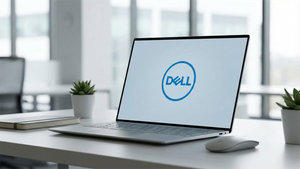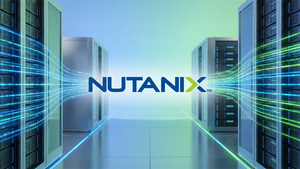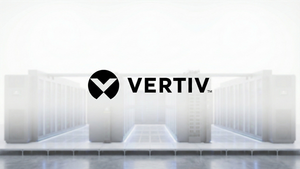M5 delivers over 4x the peak GPU compute performance for AI compared to M4, featuring a next-generation GPU with a Neural Accelerator in each core, a more powerful CPU, a faster Neural Engine, and higher unified memory bandwidth
Apple® today announced M5, delivering the next big leap in AI performance and advances to nearly every aspect of the chip. Built using third-generation 3-nanometer technology, M5 introduces a next-generation 10-core GPU architecture with a Neural Accelerator in each core, enabling GPU-based AI workloads to run dramatically faster, with over 4x the peak GPU compute performance compared to M4.1 The GPU also offers enhanced graphics capabilities and third-generation ray tracing that combined deliver a graphics performance that is up to 45 percent higher than M4.1 M5 features the world’s fastest performance core, with up to a 10-core CPU made up of six efficiency cores and up to four performance cores.2 Together, they deliver up to 15 percent faster multithreaded performance over M4.1 M5 also features an improved 16-core Neural Engine, a powerful media engine, and a nearly 30 percent increase in unified memory bandwidth to 153GB/s.1 M5 brings its industry-leading power-efficient performance to the new 14-inch MacBook Pro®, iPad Pro®, and Apple Vision Pro™, allowing each device to excel in its own way. All are available for pre-order today.
This press release features multimedia. View the full release here: https://www.businesswire.com/news/home/20251014240640/en/

M5 is Apple’s next-generation system on a chip built for AI, resulting in a faster, more efficient, and more capable chip for the 14-inch MacBook Pro, iPad Pro, and Apple Vision Pro.
“M5 ushers in the next big leap in AI performance for Apple silicon,” said Johny Srouji, Apple’s senior vice president of Hardware Technologies. “With the introduction of Neural Accelerators in the GPU, M5 delivers a huge boost to AI workloads. Combined with a big increase in graphics performance, the world’s fastest CPU core, a faster Neural Engine, and even higher unified memory bandwidth, M5 brings far more performance and capabilities to MacBook Pro, iPad Pro, and Apple Vision Pro.”
A Next-Generation GPU Architecture Optimized for AI and Graphics
With the next-generation GPU architecture in M5, every compute block of the chip is optimized for AI. The 10-core GPU features a dedicated Neural Accelerator in each core, delivering over 4x peak GPU compute compared to M4, and over 6x peak GPU compute for AI performance compared to M1.1 And now with M5, the new 14-inch MacBook Pro and iPad Pro benefit from dramatically accelerated processing for AI-driven workflows, such as running diffusion models in apps like Draw Things, or running large language models locally using platforms like webAI.
The next-generation GPU and enhanced shader cores in M5 also deliver increased graphics performance, achieving up to 30 percent faster performance compared to M4 and up to 2.5x faster performance than M1.1 M5 also includes Apple’s third-generation ray-tracing engine, providing up to a 45 percent graphics uplift in apps using ray tracing.1 Combined with rearchitected second-generation dynamic caching, the GPU provides smoother gameplay, more realistic visuals in 3D applications, and faster rendering times for complex graphics projects and other visually intensive applications. With M5, Apple Vision Pro renders 10 percent more pixels with the micro-OLED displays, and refresh rates increase up to 120Hz, resulting in crisper details, more fluid display performance, and reduced motion blur.
The GPU architecture is engineered for seamless integration with Apple’s software frameworks. Applications using built-in Apple frameworks and APIs — like Core ML®, Metal® Performance Shaders, and Metal 4 — can automatically see immediate increases in performance. Developers can also build solutions for their apps by directly programming the Neural Accelerators using Tensor APIs in Metal 4.
A Faster Neural Engine to Power Intelligent Features
The faster 16-core Neural Engine delivers powerful AI performance with incredible energy efficiency, complementing the Neural Accelerators in the CPU and GPU to make M5 fully optimized for AI workloads. For example, AI-powered features on Apple Vision Pro — like the ability to transform 2D photos into spatial scenes in the Photos app, or generating a Persona — operate with greater speed and efficiency.
The Neural Engine in M5 also enhances performance for Apple Intelligence™.3 On-device AI tools like Image Playground™ get faster, and the overall performance of Apple Intelligence models are enhanced by the faster Neural Engine and unified memory in M5.4 Also, developers using Apple’s Foundation Models framework will get faster performance.
Enhanced Memory to Do Even More with AI
M5 offers unified memory bandwidth of 153GB/s, providing a nearly 30 percent increase over M4 and more than 2x over M1. The unified memory architecture enables the entire chip to access a large single pool of memory, which allows MacBook Pro, iPad Pro, and Apple Vision Pro to run larger AI models completely on device. It fuels the faster CPU, GPU, and Neural Engine as well, offering higher multithreaded performance in apps, faster graphics performance in creative apps and games, and faster AI performance running models on the Neural Accelerators in the GPU or the Neural Engine. And with 32GB of memory capacity, M5 also helps users to seamlessly run demanding creative suites like Adobe Photoshop and Final Cut Pro® simultaneously, while uploading large files to the cloud in the background.
Apple Silicon and the Environment
Apple 2030 is the company’s ambitious plan to be carbon neutral across its entire footprint by the end of this decade by reducing product emissions from their three biggest sources: materials, electricity, and transportation. The power-efficient performance of M5 helps the new 14-inch MacBook Pro, iPad Pro, and Apple Vision Pro meet Apple’s high standards for energy efficiency, and reduces the total amount of energy consumed over the product’s lifetime.
Apple revolutionized personal technology with the introduction of the Macintosh in 1984. Today, Apple leads the world in innovation with iPhone, iPad, Mac, AirPods, Apple Watch, and Apple Vision Pro. Apple’s six software platforms — iOS, iPadOS, macOS, watchOS, visionOS, and tvOS — provide seamless experiences across all Apple devices and empower people with breakthrough services including the App Store, Apple Music, Apple Pay, iCloud, and Apple TV. Apple’s more than 150,000 employees are dedicated to making the best products on earth and to leaving the world better than we found it.
Footnotes
1 Testing conducted by Apple in September 2025 using preproduction 14-inch MacBook Pro systems with Apple M5, 10-core CPU, and 10-core GPU; production 14-inch MacBook Pro systems with Apple M4, 10-core CPU, and 10-core GPU; and production 13-inch MacBook Pro systems with Apple M1, 8-core CPU, and 8-core GPU. Performance measured using select industry-standard benchmarks. Performance tests are conducted using specific computer systems and reflect the approximate performance of MacBook Pro.
2 Testing conducted by Apple in September 2025 using shipping competitive systems and select industry-standard benchmarks.
3 Apple Intelligence is available in beta with support for these languages: English, French, German, Italian, Portuguese (Brazil), Spanish, Chinese (simplified), Japanese, and Korean. Some features may not be available in all regions or languages. For feature and language availability and system requirements, see support.apple.com/en-us/121115.
4 Genmoji™ and Image Playground are available in English, French, German, Italian, Portuguese (Brazil), Spanish, and Japanese.
NOTE TO EDITORS: For additional information visit Apple Newsroom (www.apple.com/newsroom), or email Apple’s Media Helpline at media.help@apple.com.
© 2025 Apple Inc. All rights reserved. Apple, the Apple logo, MacBook Pro, iPad Pro, Apple Vision Pro, Core ML, Metal, Apple Intelligence, Image Playground, Final Cut Pro, and Genmoji are trademarks of Apple. Other company and product names may be trademarks of their respective owners.
View source version on businesswire.com: https://www.businesswire.com/news/home/20251014240640/en/
Contacts
Lauren Klug
Apple
l_klug@apple.com
Andrea Schubert
Apple
a_schubert@apple.com





